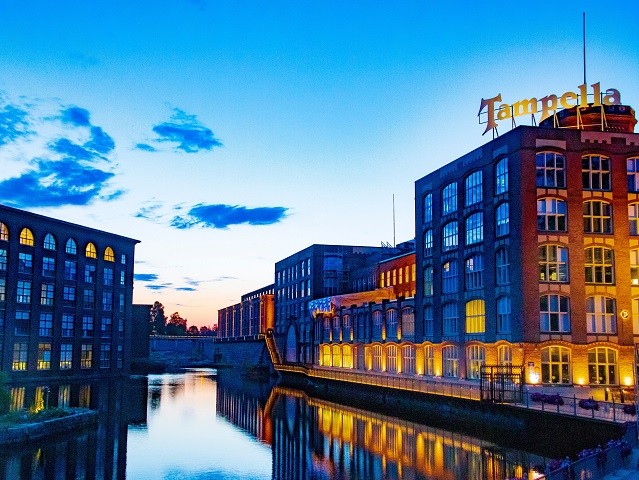Tampere keeps pursuing its 2030 carbon neutral dream
January 27, 2021, Tampere - STARDUST partners from Tampere established its online presence at the 2021 Tampere Smart City Week (TSCW) in a number of sessions. They shared their vision on carbon neutrality, and smart city solutions that they have worked on as part of the STARDUST project. Tampere will be carbon neutral in 2030 The local STARDUST partners in Tampere in cooperation with BABLE organised a session on Sustainable Future, which focused on the methods the city is implementing to meet its carbon neutrality goal by 2030. Markus Laine (Tampere University) shared with the audience the latest developments happening in Tampere. This includes the introduction of Nordic superblocks at Hiedanranta, a new residential area in Tampere, and the launch of a new international bachelor degree program on sustainable urban development. This was followed by Laura Inha (City of Tampere), who explained how to make sustainability a part of people’s lives through the Carbon Neutral Tampere 2030 Roadmap. Climate has been a clear statement as the city built its strategy as highlighted by the title of this section. Guidelines were then made in the process to point the city towards the right direction in achieving its carbon neutrality goal. In order for Tampere to be carbon neutral by 2030, it must reduce its total CO2 emission by 80% in comparison to the data from 1990. Although work still needs to be done, good progress has already been made as shown by the graph (http://stardustproject.eu/wp-content/uploads/2021/02/Screenshot-1066-e1612524740990.png). To address this challenge, the city made a roadmap with six different themes centred on sustainability: city planning, mobility, construction, energy, consumption, and urban nature. Every theme has a specific goal in mind, as well as a group action. So far, the city has identified over 200 individual actions. These are implemented in two ways: either through the city’s strategic management system, or through projects such as STARDUST, 6Aika, and UnaLab, and collaborative efforts done with citizens, companies and the university. Afterwards, Elina Seppänen (City of Tampere) together with her colleague Emmi Nieminen discussed how the climate budget works. By definition, the climate budget offers a systematic way to illustrate how much the city is doing to mitigate and adapt to climate change, and report progress towards goals. It is divided into two sections: emission budget, in which it sets a maximum limit for greenhouse gas emissions, as well as the financial budget, in which financial resources are budgeted for climate measures such as climate change mitigation, adaptation and sustainable mobility. The city of Tampere first referred to Oslo’s climate budget and adapted accordingly. In relation to the collaboration efforts discussed by Laura, Pirkko Eteläaho (City of Tampere) described in detail the Climate Partnership Model taking place in Tampere. Through this network, companies work together in developing climate actions, while strengthening the local innovative ecosystem. Lastly, Reijo Väliharju (Hiedanrannan Kehitys Oy) shared plans on making Hiedanranta a sustainable neighbourhood of the future. Solutions include CO2 negative biochar production, biowaste recycling systems, heat energy storage, sustainable urban food production, and Mobility as a Service (MaaS). Read the full article on http://stardustproject.eu/news/tampere-keeps-pursuing-2030-carbon-neutral-dream/
Keywords
carbon neutrality, climate, sustainability, energy, mobility, urban nature, smart cities



